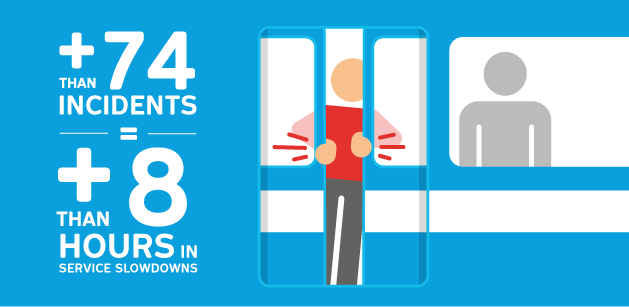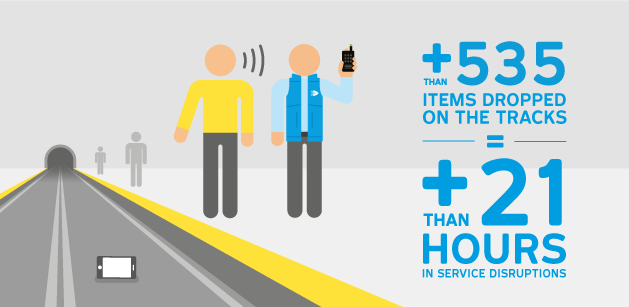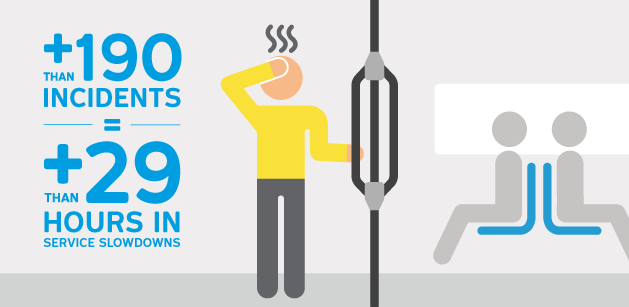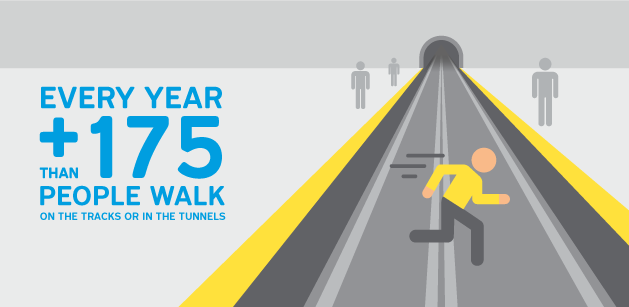
1. Holding back the doors

If the doors are closing, do not try to enter the car or hold back the doors for your friends. It slows everyone down, and you could also get a fine.
2. Dropping items on the tracks

For your safety, stay behind the yellow line and hold onto your personal items.
What should you do if you drop something on the tracks?
Stay calm and do not put yourself in danger. Notify an STM employee, who will help you get it back.
3. Sick passengers

If you don’t feel well, stay on the platform and ask for help.
4. Walking on the tracks

Trains arrive in the stations at 72 km/h. Never go onto the tracks. It’s dangerous, and you could also get a fine of $500.
What should you do if you see someone on the tracks?
Locate the emergency assistance station on the platform. Pull the handle to shut off the power to the tracks and pick up the phone to notify an STM employee.